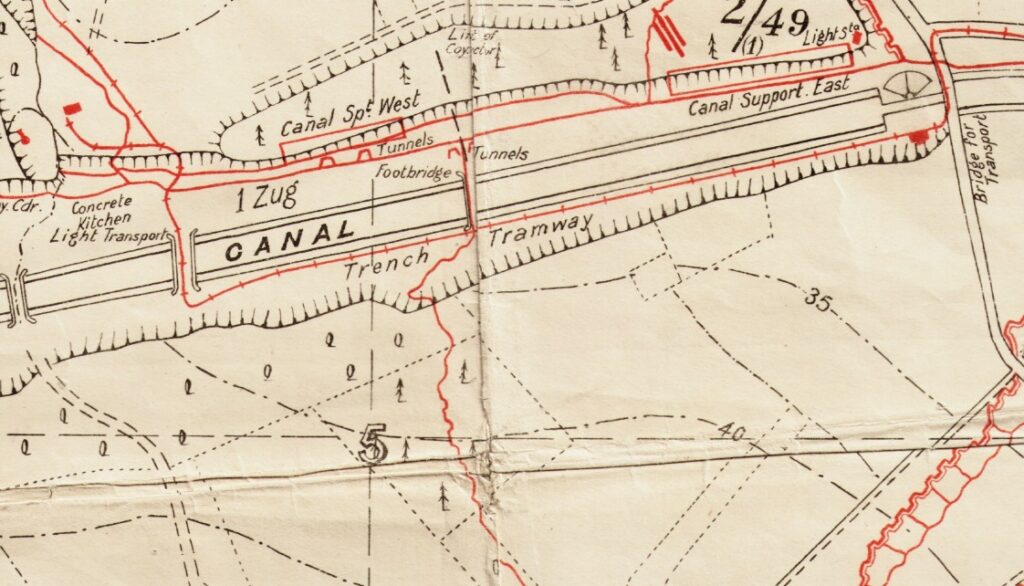Komenseweg bridge at ‘Entrepot‘ was an elegant road bridge that survived the war in spite of several changes of hands. Today a vast earth bank holds back the water in the lock, with a pipe discharging water into the morass that remains of the canal bend. In May 1940, the 2nd Royal Scots Fusiliers reported blowing up the bridge at this point, and whether there was a bridge or that they simply cratered the earth causeway is not known at this point.
Right: the Lock in May 1918. The German photographer stood on the bridge visible in the picture on the left to take this picture.
Lock 6b, alongside the bridge, survived in relatively good condition until 1917, when the blanket shelling of the area left severe damage. In June 1917 it was captured by the British. In April 1918 it again came under artillery fire and was recaptured by the Germans. Finally in September 1918 it again suffered the preparatory bombardments of the final offensive in the west.
The order of locks at this point in of the canal was 6, 6b, 7b, 7…, because the ‘b’ locks were inserted later after a change of plan in the canal construction. At the start of WW1, lock 6b was open, leaving the entire upper reach of the canal empty, while the canal bend or ‘Kanal Knie‘ was filled with water, held by gates at Lock 6.
The trench tramway from Drei Häuser reached Komenseweg in the top right corner of the map, then moved south over the road bridge. It then ran along the towpath on the south side of the empty canal before turning north over a bridge and heading for its first destination.





